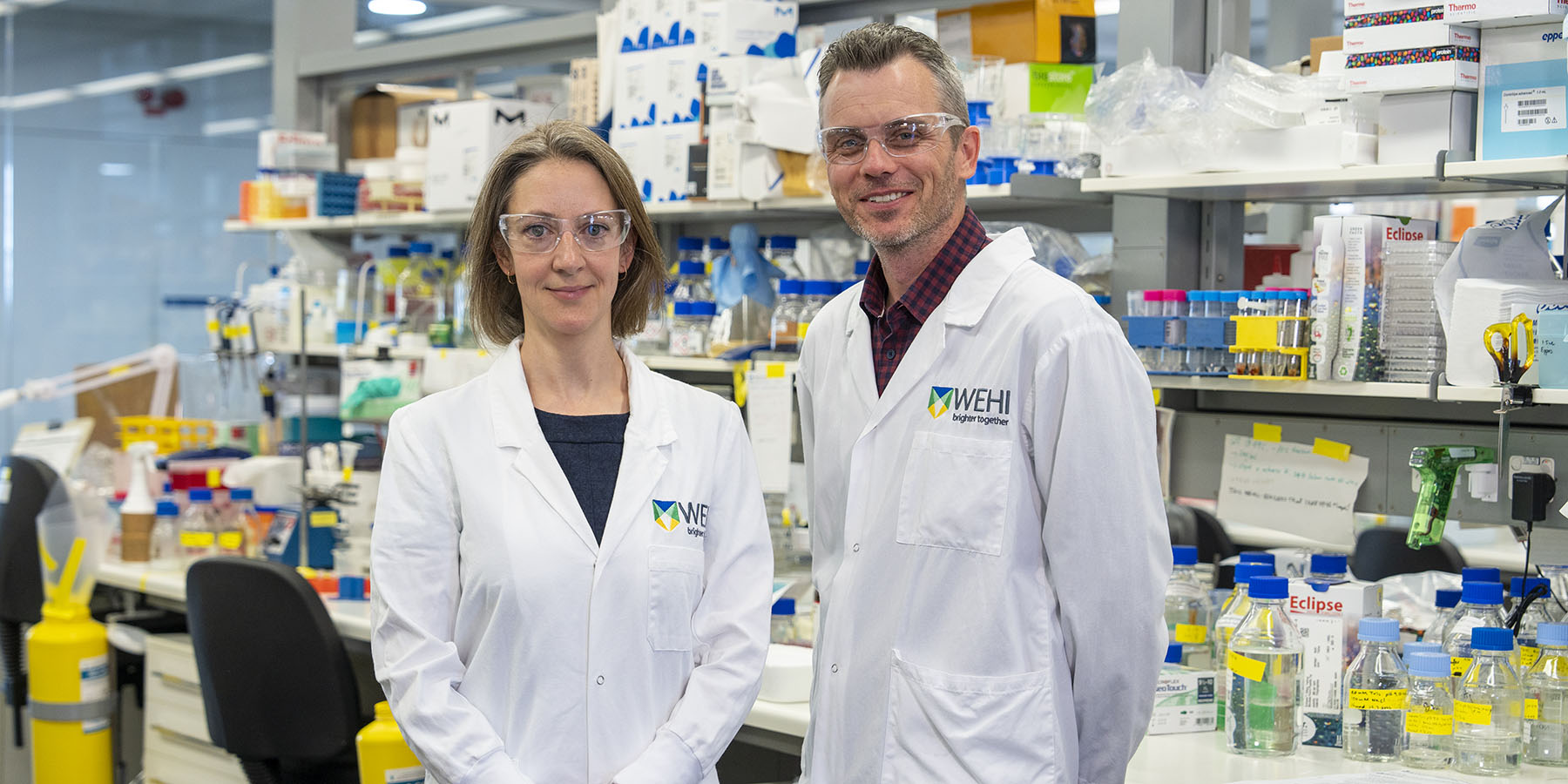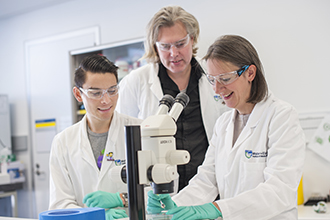Sarson-Lawrence KTG, Hardy JM, Iaria J, Stockwell D, Behrens K, Saiyed T, Tan C, Jebeli L, Scott NE, Dite TA, Nicola NA, Leis AP, Babon JJ, Kershaw NJ. Cryo-EM structure of the extracellular domain of murine Thrombopoietin Receptor in complex with Thrombopoietin. Nature Communications. 2024;15(1):10.1038/s41467-024-45356-2
Linossi EM, Li K, Veggiani G, Tan C, Dehkhoda F, Hockings C, Calleja DJ, Keating N, Feltham R, Brooks AJ, Li SS, Sidhu SS, Babon JJ, Kershaw NJ, Nicholson SE. Discovery of an exosite on the SOCS2-SH2 domain that enhances SH2 binding to phosphorylated ligands. Nature Communications. 2021;12(1):10.1038/s41467-021-26983-5
Morris R, Zhang Y, Ellyard JI, Vinuesa CG, Murphy JM, Laktyushin A, Kershaw NJ, Babon JJ. Structural and functional analysis of target recognition by the lymphocyte adaptor protein LNK. Nature Communications. 2021;12(1):10.1038/s41467-021-26394-6
Morris R, Kershaw NJ, Babon JJ. The molecular details of cytokine signaling via the JAK/STAT pathway. Protein Science. 2018;27(12):10.1002/pro.3519
Liau NPD, Laktyushin A, Lucet IS, Murphy JM, Yao S, Whitlock E, Callaghan K, Nicola NA, Kershaw NJ, Babon JJ. The molecular basis of JAK/STAT inhibition by SOCS1. Nature Communications. 2018;9(1):10.1038/s41467-018-04013-1
Oxley EP, Kershaw NJ, Louis C, Goodall KJ, Garwood MM, Jee Ho SM, Voo VTF, Park H-Y, Iaria J, Wong LLL, Lebenbaum AG, Wiranata S, Pang ES, Edwards ESJ, D’Silva DB, Hansen J, van Zelm MC, O’Keeffe M, Hogarth PM, Haynes NM, Huntington ND, Wicks IP, Dickins RA. Context-restricted PD-(L)1 checkpoint agonism by CTLA4-Ig therapies inhibits T cell activity. Cell Reports. 2024;43(10):10.1016/j.celrep.2024.114834
Zhang Y, Morris R, Brown GJ, Lorenzo AMD, Meng X, Kershaw NJ, Kiridena P, Burgio G, Gross S, Cappello JY, Shen Q, Wang H, Turnbull C, Lea-Henry T, Stanley M, Yu Z, Ballard FD, Chuah A, Lee JC, Hatch A-M, Enders A, Masters SL, Headley AP, Trnka P, Mallon D, Fletcher JT, Walters GD, Šestan M, Jelušić M, Cook MC, Athanasopoulos V, Fulcher DA, Babon JJ, Vinuesa CG, Ellyard JI. Rare SH2B3 coding variants in lupus patients impair B cell tolerance and predispose to autoimmunity. Journal of Experimental Medicine. 2024;221(4):10.1084/jem.20221080
Linossi EM, Li K, Veggiani G, Tan C, Dehkhoda F, Hockings C, Calleja DJ, Keating N, Feltham R, Brooks AJ, Li SS, Sidhu SS, Babon JJ, Kershaw NJ, Nicholson SE. Author Correction: Discovery of an exosite on the SOCS2-SH2 domain that enhances SH2 binding to phosphorylated ligands. Nature Communications. 2023;14(1):10.1038/s41467-023-42706-4
Sarson-Lawrence KTG, Hardy JM, Iaria J, Saiyed T, Leis AP, Babon JJ, Kershaw NJ. Structural studies of the thrombopoietin–thrombopoietin receptor signalling complex. Acta Crystallographica Section A: Foundations and advances. 2023;79(a2):10.1107/s2053273323086734
Liang S, Tran E, Du X, Dong J, Sudholz H, Chen H, Qu Z, Huntington ND, Babon JJ, Kershaw NJ, Zhang Z-Y, Baell JB, Wiede F, Tiganis T. A small molecule inhibitor of PTP1B and PTPN2 enhances T cell anti-tumor immunity. Nature Communications. 2023;14(1):10.1038/s41467-023-40170-8
Liang S, Tran E, Du X, Dong J, Sudholz H, Chen H, Qu Z, Huntington ND, Babon JJ, Kershaw NJ, Zhang Z-Y, Baell JB, Wiede F, Tiganis T. A small molecule inhibitor of PTP1B and PTPN2 enhances T cell anti-tumor immunity. 2023;4(06-30):10.1101/2023.06.16.545220
Morris R, Keating N, Tan C, Chen H, Laktyushin A, Saiyed T, Liau NPD, Nicola NA, Tiganis T, Kershaw NJ, Babon JJ. Structure guided studies of the interaction between PTP1B and JAK. Communications Biology. 2023;6(1):10.1038/s42003-023-05020-9
Low RRJ, Fung KY, Gao H, Preaudet A, Dagley LF, Yousef J, Lee B, Emery-Corbin SJ, Nguyen PM, Larsen RH, Kershaw NJ, Burgess AW, Gibbs P, Hollande F, Griffin MDW, Grimmond SM, Putoczki TL. Correction to: S100 family proteins are linked to organoid morphology and EMT in pancreatic cancer. Cell Death & Differentiation. 2023;30(5):10.1038/s41418-023-01151-y
Low RRJ, Fung KY, Gao H, Preaudet A, Dagley LF, Yousef J, Lee B, Emery-Corbin SJ, Nguyen PM, Larsen RH, Kershaw NJ, Burgess AW, Gibbs P, Hollande F, Griffin MDW, Grimmond SM, Putoczki TL. S100 family proteins are linked to organoid morphology and EMT in pancreatic cancer. Cell Death & Differentiation. 2023;30(5):10.1038/s41418-023-01126-z
Doggett K, Keating N, Dehkhoda F, Bidgood GM, Meza Guzman LG, Leong E, Kueh A, Nicola NA, Kershaw NJ, Babon JJ, Alexander WS, Nicholson SE. The SOCS1 KIR and SH2 domain are both required for suppression of cytokine signaling in vivo. Cytokine. 2023;165:10.1016/j.cyto.2023.156167




